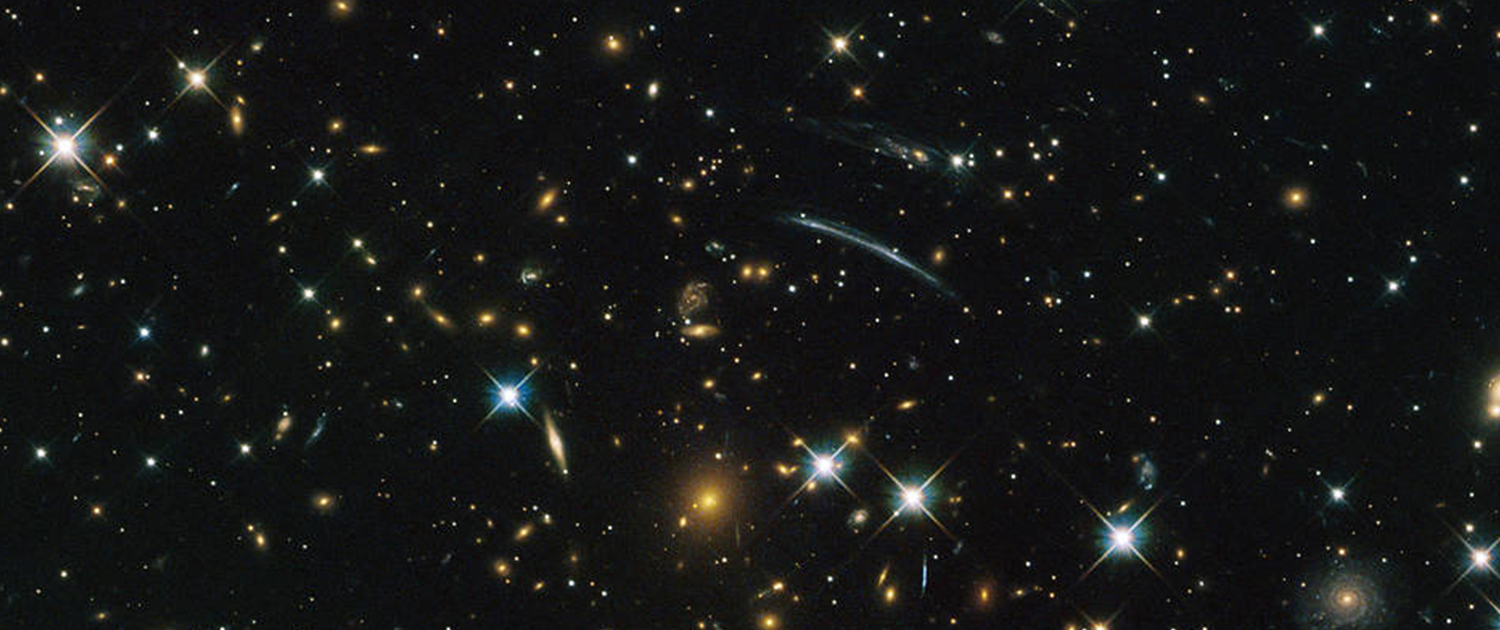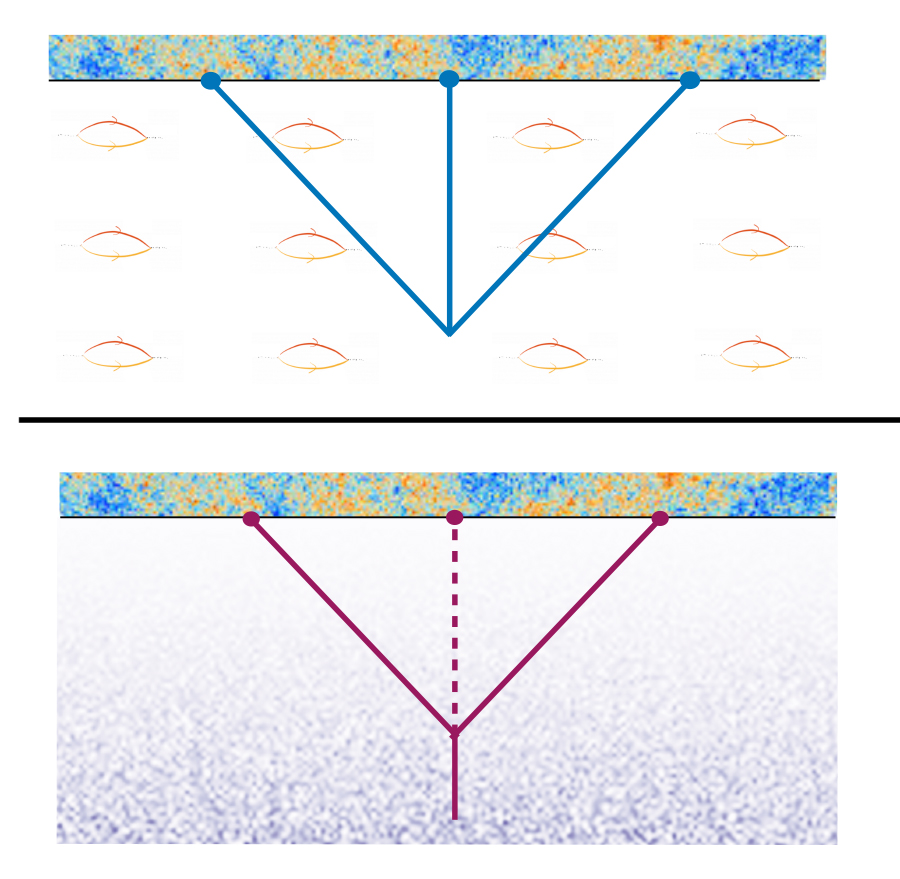Scientists Explore Signals for a Quantum Universe
Published Date
By:
- Cynthia Dillon
Share This:
Article Content

ESA/Hubble & NASA, RELICS; Acknowledgement: D. Coe et al.
One of the most dramatic ideas in science is that all the structure in the universe—origins of galaxies, solar systems, planets, etc.—comes from quantum mechanics. Theoretically, it connects the biggest objects in the universe with the physics of the smallest possible scales. But, there is no way for scientists to know if this is the mechanism for the universe’s structure without a way to test it.
According to UC San Diego Assistant Professor of Physics Daniel Green and his collaborator Astroparticle Physicist Rafael Porto, from Deutsches Elektronen-Synchrotron DESY, in Hamburg, Germany, understanding the unique role that quantum mechanics plays in physics is a problem with wide appeal.
“It is connected to big questions like what problems can a quantum computer solve faster than any classical computer, or how does information escape from an evaporating black hole? Our work adds the origin of structure in the universe to this list and, hopefully, will lead to more connections between cosmology and the study of quantum information,” explained Green.
With this in mind, Green and Porto set out to show how a test of quantum mechanics at play in the universe could work. Their findings are published in Physical Review Letters, titled “Signals of a Quantum Universe.”
For background, quantum mechanics differs from classical physics—Newtonian mechanics, thermodynamics, electromagnetism, etc.—which applies theories to small objects from atoms to those moving at the speed of light. With particles, for example, classical physics assumes that all physical qualities have assigned values. Quantum mechanics, on the other hand, says that with a particle, the more precise the position/momentum of a particle, the less precise its momentum/position is. This is known as the uncertainty principle.

A comparison of the quantum and classical origins of structure in the universe. Top: vacuum fluctuations in quantum mechanics, including the possibility of three particles (three-point correlation) being created out of nothing by the expansion of the universe. Bottom: classical fluctuations always involves real particles. These particles decay and produce “bumps” in the three point correlation. Image by Daniel Green, UC San Diego
“Quantum mechanics is not important for big objects like galaxies by the time we see them—the same way we don't notice quantum effect in everyday experience,” said Green. “If we want to say that what seeded the formation of these objects was quantum mechanics, we need a way to tell what happened in the universe long before we can directly observe it, back when quantum mechanics was important.”
So Green and Porto took a different approach from that of other researchers to find a signal for the quantum origin of structure by applying a few theoretical techniques—some of which were also used to understand the way particles scatter in colliders.
First, they considered quantum fluctuations—that idea of uncertainty whereby you can't know exactly where something is and where it is going at the same time.
“Applied to the universe, this means that the universe can't be exactly uniform everywhere because quantum uncertainty says that you can’t know exactly what the density is at any given point,” explained Green. “In our modern theories of cosmology, this quantum uncertainty is translated into real classical fluctuations because of the expansion of the universe. These fluctuations later grow under the force of gravity to make all of the structure in the universe, from stars and planets to galaxies and galaxy clusters.”
Next, they considered the randomness of density by addressing “primordial non-Gaussianity.” According to Green, one way to define randomness is in terms of the correlation between different points.
“When something is ‘Gaussian’ this correlation between pairs of points determines everything about the random field,” said Green. “Most importantly, there is no correlation between groups of three points. If a pair of points are both over-dense, it is equally likely that a third point would be over-dense or under-dense. Non-Gaussianity allows for a preference for one or the other. The non-Gaussianity we talk about would have these kinds of three-point correlations.”
Their research shows that the kinds of correlations produced from quantum and classical fluctuations differs measurably.
“Classical mechanisms would have produced a very specific signature in the pattern of galaxies — like ‘bumps’ signaling new particles in particle collider data,” said Porto. “We have demonstrated that the absence of these bumps would unavoidably point to zero-point quantum fluctuations as the culprit for structure formation.”
Green and Porto also considered the concept of locality. This is the idea that for one thing to affect something else, the two things need to be in the same place at the same time.
“For example, if I want to influence something far away, I need to send a physical signal of some kind that starts where I am and goes to the other place,” said Green. “Nothing just acts from one place to another without something going through all the points in between.”
In terms of those non-Gaussian correlations, the scientists refer to points that are very far apart. Normally they would expect such a correlation to require something to have happened in the past that connected these three points by some kind of local process, where something physically happens at each of these points.
“A key idea in our result is that the uniqueness of the signal is very closely related to the fact that every particle has an antiparticle, which is also a consequence of locality/causality,” said Green. “The connection between the existence of antiparticles and our cosmic signal was a fun surprise we discovered along the way.”
This study was supported by the U.S. Department of Energy (grant no. DESC0019035); the ERC Consolidator Grant “Precision Gravity: From the LHC to LISA,” provided by the European Research Council (ERC) under the European Union’s H2020 research and innovation programme (grant no. 817791), as well as from the Deutsche Forschungsgemeinschaft (DFG, German Research Foundation), under Germany’s Excellence Strategy (EXC 2121) “Quantum Universe” (390833306).
Share This:
You May Also Like
UC San Diego is Strengthening U.S. Semiconductor Innovation and Workforce Development
Technology & EngineeringStay in the Know
Keep up with all the latest from UC San Diego. Subscribe to the newsletter today.



